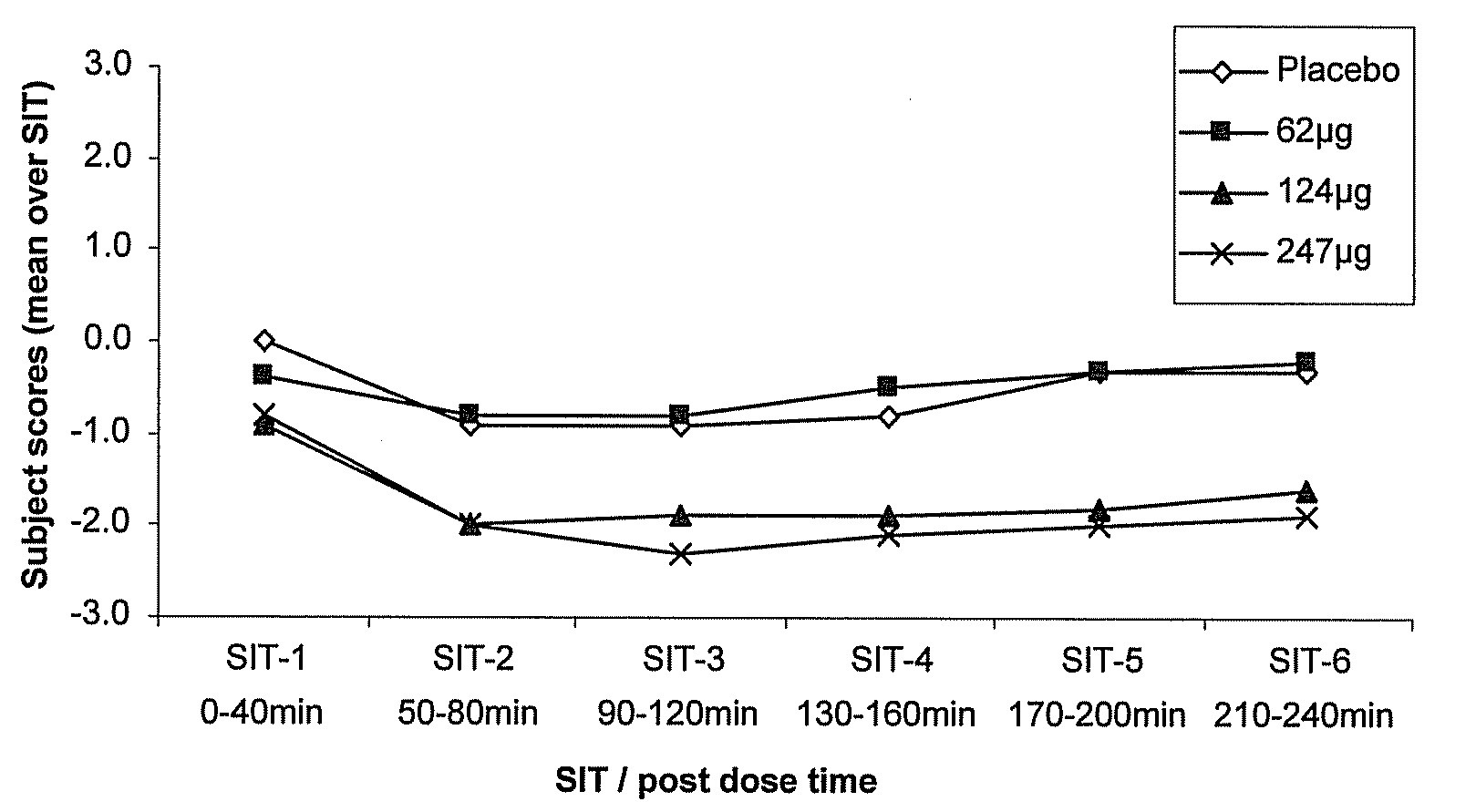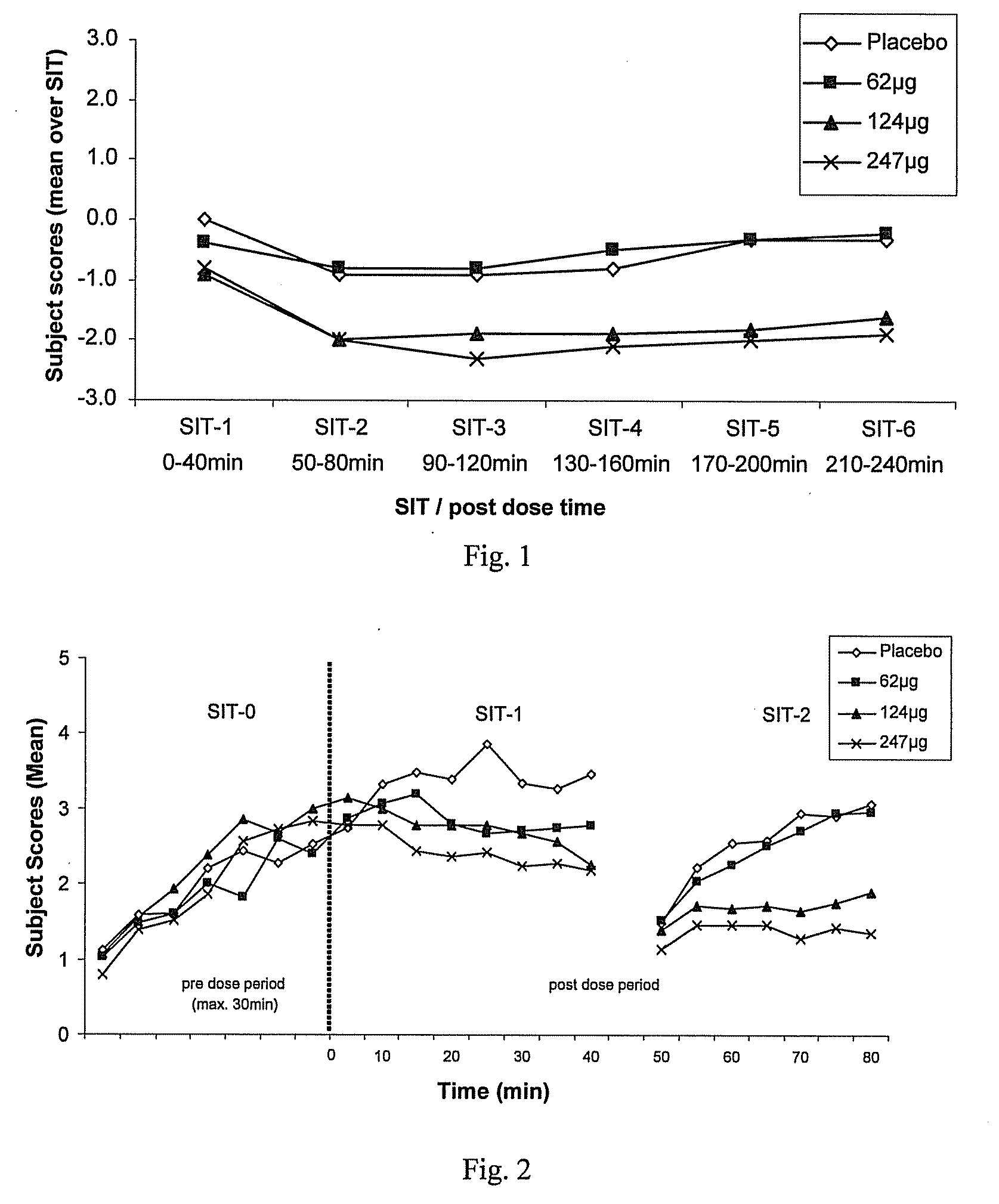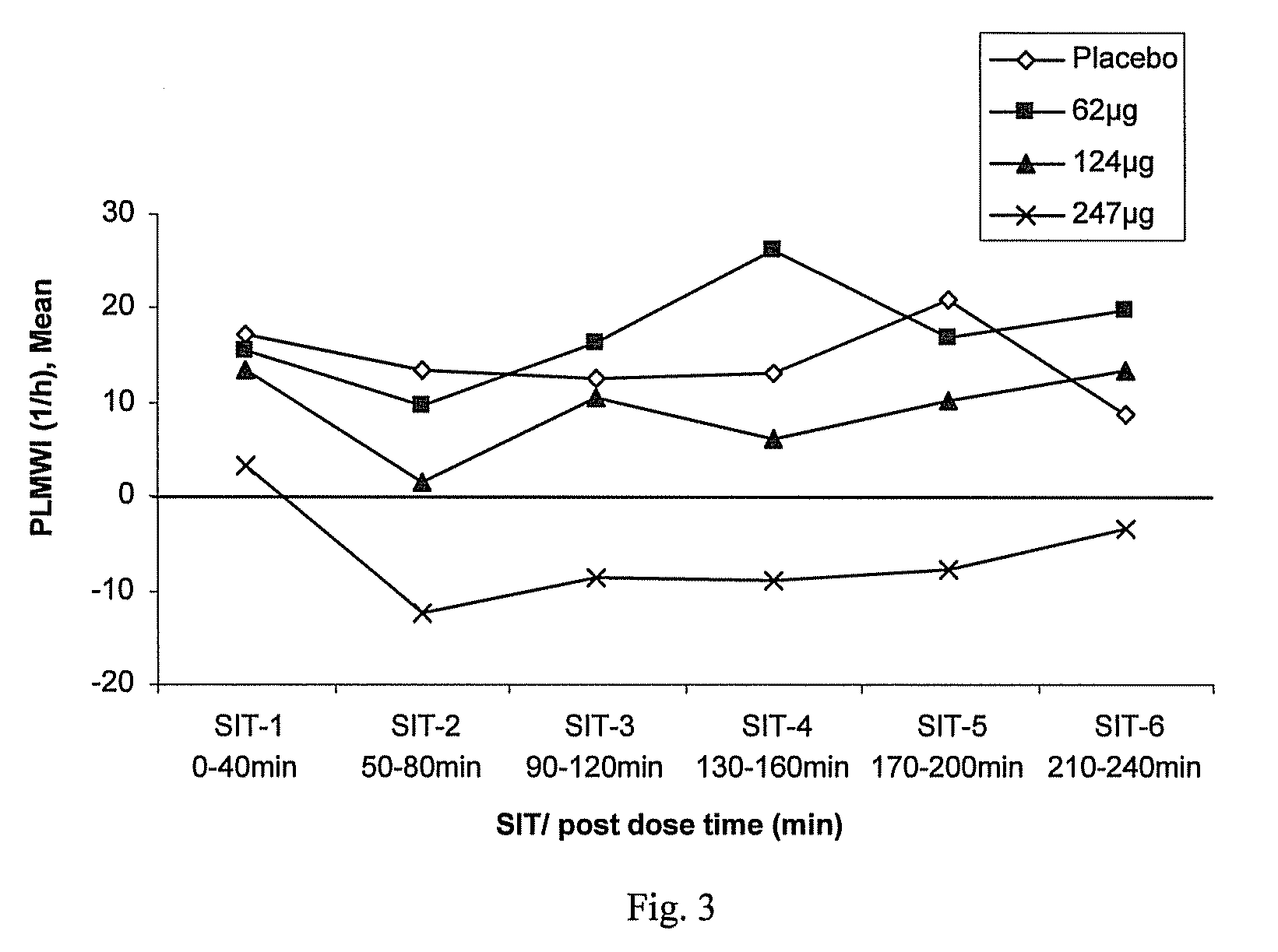Method for Treating a Restless Limb Disorder
a restless limb and disorder technology, applied in the field of restless limb disorders, can solve the problems of troublesome and distressing, restlessness and disturbed or interrupted sleep, and the affected person's irresistible urge to move the affected leg or leg, so as to reduce the occurrence and/or severity of one or more rls symptoms
- Summary
- Abstract
- Description
- Claims
- Application Information
AI Technical Summary
Benefits of technology
Problems solved by technology
Method used
Image
Examples
example 1
[0409]The following intranasal formulation according to the present invention was prepared:[0410]2.5 g / l rotigotine HCl[0411]85 g / l α-cyclodextrin[0412]8 g / l NaCl[0413]0.2 g / l KCl[0414]1.44 g / l Na2HPO4.2H2O[0415]0.2 g / l KH2PO4 [0416]31.2 g / l glycerol (87% solution in water)[0417]water to add up to final volume[0418]citric acid for pH adjustment[0419]pH of solution 5.8
[0420]Water, 610 ml was adjusted to pH 3 with citric acid and α-cyclodextrin, glycerol and rotigotine HCl were added to give a concentration of 85 mg / ml, 2.6 vol. % and 2.5 mg / ml respectively. Subsequently, 250 ml of 4× PBS buffer solution (having four times the concentration of standard PBS buffer solution, i.e., a concentration of 32 g / l NaCl, 0.8 g / l KCl, 5.76 g / l Na2HPO4.2H2O and 0.8 g / l KH2PO4 in water) was added, followed by dropwise addition of 1M citric acid until a pH of 5.8 was reached. Water was used to fill up to a final volume of 1000 ml.
[0421]The obtained solution was filtered through 0.22 μm PES filter. T...
example 2
[0422]The (maximum) solubility of rotigotine HCl in aqueous solution at room temperature (20° C.) can be significantly improved by use of α-cyclodextrin (α-CD), but there is no significant increase in rotigotine solubility when β-cyclodextrin (β-CD) is used. For cyclodextrin concentrations which are close to the maximum solubility of each of the two cyclodextrin types, 5.03 mg / ml rotigotine HCl could be dissolved in an 0.1 g / ml α-CD solution but only 1.57 mg / ml could be dissolved in a 0.015 g / ml β-CD solution.
[0423]The concentration was determined by isocratic HPLC analysis. HPLC column LiChroCART 75×4 mm, Superspher 60 RP-select B 5 μm (Merck), column temperature: 30° C., mobile phase:water / acetonitrile / methanesulfonic acid (65 / 35 / 0.05 v / v / v), flow rate: 2 ml / min, injection volume: 50 μl, detection at 220 nm, retention time approx. 1.5 min. The concentration was determined by use of an external reference solution having known concentration.
[0424]The results are shown in Table 1.
TAB...
example 3
[0427]To evaluate the storage stability of potential intranasal formulations of rotigotine HCl the following formulations were prepared:
[0428]Formulation sample A:[0429]2.5 g / l rotigotine HCl[0430]0.5% (v / v) Tween 80[0431]8 g / l NaCl[0432]0.2 g / l KCl[0433]1.44 g / l Na2HPO4.2H2O[0434]0.2 g / l KH2PO4 [0435]water to add up to final volume[0436]citric acid for pH adjustment, pH 5.8
[0437]Water, 470 ml was adjusted to pH 3 with citric acid, and Tween 80 and rotigotine HCl were added to give a concentration of 0.5 vol. % and 2.5 mg / ml respectively. Subsequently, 200 ml of 4× PBS buffer solution was added, followed by dropwise addition of 1M citric acid until a pH of 5.8 was reached. Water was used to fill up to a final volume of 800 ml.
[0438]Formulation sample B:[0439]2.5 g / l rotigotine HCl[0440]85 g / l α-cyclodextrin[0441]8 g / l NaCl[0442]0.2 g / l KCl[0443]1.44 g / l Na2HPO4.2H2O[0444]0.2 g / l KH2PO4 [0445]water to add up to final volume[0446]citric acid for pH adjustment, pH 5.8
[0447]Water, 470 m...
PUM
| Property | Measurement | Unit |
|---|---|---|
| concentration | aaaaa | aaaaa |
| volume | aaaaa | aaaaa |
| concentration | aaaaa | aaaaa |
Abstract
Description
Claims
Application Information
 Login to View More
Login to View More - R&D
- Intellectual Property
- Life Sciences
- Materials
- Tech Scout
- Unparalleled Data Quality
- Higher Quality Content
- 60% Fewer Hallucinations
Browse by: Latest US Patents, China's latest patents, Technical Efficacy Thesaurus, Application Domain, Technology Topic, Popular Technical Reports.
© 2025 PatSnap. All rights reserved.Legal|Privacy policy|Modern Slavery Act Transparency Statement|Sitemap|About US| Contact US: help@patsnap.com



